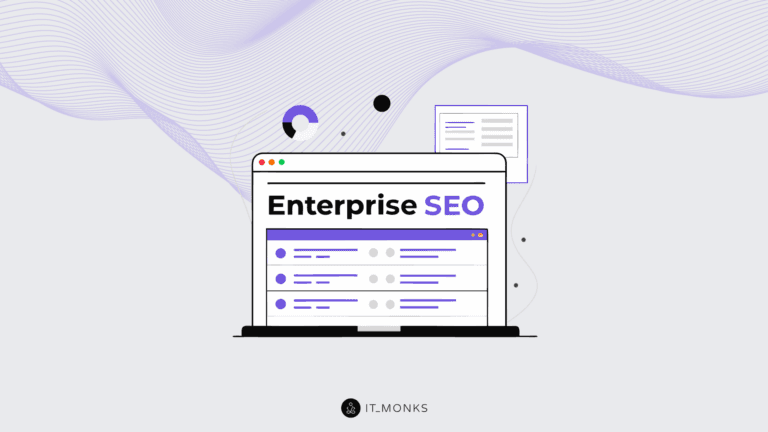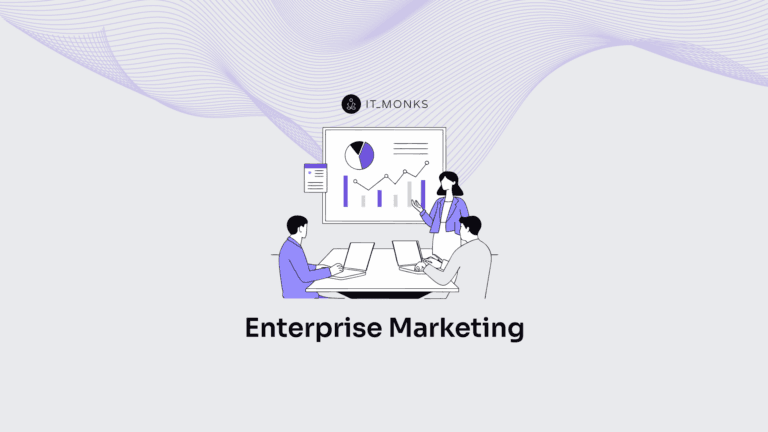Ecommerce Checklist: 15 Points You Must Have
Table of Contents
Table of Contents

An ecommerce website launch is a logical step most businesses take after creating a stunning product or service. However, after deciding to start custom-built ecommerce websites, many business owners underestimate the importance of creating a site launch checklist. We understand your desire to introduce the online community to the impressively useful products you’ve spent a long time and effort developing. Still, it’s always better to stick to the points outlined in the ecommerce website checklist to ensure a smooth website launch.
Have you developed an ecommerce website launch checklist? If not, no worries! Consider bookmarking this blog post to check the list online. This article contains all the to-dos you’ll need to complete before you launch an online store that meets ecommerce requirements, from setting up a domain nameDomain NameThe address that people use to find your website on the internet.
More About Domain Name to creating a privacy policy and integrating your site with social media. Let’s explore each point from the ecommerce launch checklist step-by-step.
Need to build a web store from scratch?
1. Choose an Ecommerce Platform
Selecting the right ecommerce platform is foundational to your online business and vital to building an ecommerce website checklist. A robust platform can simplify operations, enhance user experience, and support your business growth. WooCommerceWooCommerceA free, open-source e-commerce plugin for WordPress.
More About WooCommerce is a popular choice due to its flexibility and integration with WordPressWordPressOpen-source content management system (CMS) that allows users to create and manage websites and blogs.
More About WordPress. It offers extensive customization options and supports various plugins and themes.
Based on the findings from the previous article on choosing e-commerce programming languages, the best solution would be to use PHPPHPHypertext Preprocessor is a programming language primarily used for web development.
More About PHP. PHP is particularly advantageous for eCommerce due to its widespread use, extensive community support, and compatibility with various eCommerce platforms such as WooCommerce.
Considerations for Choosing a Platform:
- Ease of Use: The platform should be intuitive and easy to manage.
- Customization: Ensure it offers enough customization to match your brand’s identity.
- Scalability: Choose a platform that can grow with your business.
- Cost: Evaluate initial and ongoing costs, including transaction fees and pluginPluginA piece of software that can be easily installed and activated on a CMS platform to enhance its capabilities.
More About Plugin costs.
Other notable platforms include ShopifyShopifyAn e-commerce platform that allows entrepreneurs to set up and manage their online stores.
More About Shopify, Magento, and BigCommerce, each offering unique features tailored to different business needs.
2. Select a Domain Name
Your domain name is your online identity. It’s crucial for brand recognition and SEOSEOSearch Engine Optimization involves optimizing various website elements to make it more attractive to search engines like Google, Bing, and Yahoo.
More About SEO. A well-chosen domain name for a website can make a lasting impression and attract more visitors. Here are some tips:
- Keep it Short and Simple: A concise and memorable domain name is easier for customers to remember.
- Avoid Numbers and Hyphens: These can confuse and are often forgotten.
- Use KeywordsKeywordsA specific word or phrase that encapsulates the essence of a particular topic or theme.
More About Keywords: Including relevant keywords can enhance your SEO and help users find your site. - Reflect Your Brand: The domain name should reflect the essence of your company and brand. It should be naturally aligned with what your business represents.
Services like GoDaddy, Namecheap, and Google Domains provide tools to help you find and register the perfect domain name. Ensure the domain name is available, and consider purchasing multiple extensions (.com, .net, .org) to secure your brand.
Example: Let’s say you’re starting an online store specializing in eco-friendly home decor products. You want a domain name that is short, simple, and includes relevant keywords.
Bad Options:
- ecofriendlydecorations.com: This name is too long and includes unnecessary words.
- greenhome.com: This name is too generic and doesn’t clearly indicate what your store sells.
- ecofriendlydecorations123.com: This name includes a number, which can be confusing and easily forgotten.
Good Options:
- greendecor.com: This name is short, simple, and includes relevant keywords. It clearly indicates that your store specializes in eco-friendly home decor.
- ecohome.com: This name is also short and includes relevant keywords. It’s easy to remember and clearly communicates your store’s focus.
Best Option:
greendecor.com: This name is the best option because it is short, simple, and includes relevant keywords. It communicates your store’s focus and is easy to remember.
3. Choose a Web Hosting Provider
Reliable web host for WordPress is essential for your website’s performancePerformanceRefers to how fast a website or web application loads and responds to user interactions.
More About Performance and security. A good web host ensures your site is always accessible, loads quickly, and remains secure.
Key Factors to Consider:
- Uptime: Look for a host that guarantees at least 99.9% uptime.
- Speed: Fast loading times improve user experience and SEO rankings.
- Customer Support: Choose a provider with 24/7 support.
- Scalability: Ensure the host can grow with your business needs.
Your hostingHostingThe process of storing and serving website files on a remote server, making them accessible to visitors around the world.
More About Hosting capacity should depend on the number of products and media files associated with them. The hosting resources (RAM, CPU) should also match the site’s trafficTrafficThe number of visitors or users who visit a particular website.
More About Traffic and complexity.
When selecting a hosting provider, it is advisable to consult with your project developers to ensure compatibility and optimal performance.
Top web hosting providers include Bluehost, SiteGround, and A2 Hosting, which are known for their reliability and excellent customer service. Partnering with companies like WP VIP can also offer enhanced performance and support tailored specifically for WordPress sites. By choosing your web hosting provider carefully, you can ensure a stable, fast, and scalable online store that meets your business needs.
4. Build Your Website’s Essential Pages
An effective ecommerce website should have several essential pages to provide a comprehensive user experience, apply user-centered design methods and convey critical information. These pages include:
- Home: The main landing pageLanding PageA standalone web page created specifically for a marketing or advertising campaign.
More About Landing Page that introduces your brand and highlights key products or promotions. - Category Pages: Organize products into categories to help users easily find what they want. Optimize these pages for broader search terms to attract more traffic.
- Product Pages: These are detailed pages for each product, including descriptions, images, pricing, and customer reviews. Focus on optimizing these pages with relevant keywords to improve their visibility in search engines.
- About Us: Share your brand’s story, mission, and values to build a connection with customers and enhance trust.
- Contact: To improve customer support, provide multiple contact options, such as email, phone, live chat, and social media links.
- Shipping and Returns Policy: Clearly outline your shipping methods, costs, and return policies to build trust and set clear expectations with customers.
Each page should be designed with user experience in mind, ensuring easy navigation and accessibilityAccessibilityThe practice of designing and developing websites that can be easily accessed and used by individuals with disabilities.
More About Accessibility.
Want to launch a well-polished store?
5. Ensure Your Site is Secure
Security is a paramount concern for ecommerce websites. Protecting customer information and ensuring secure transactions are critical for maintaining trust and complying with regulations. Key security measures include:
- SSLSSLSecure Sockets Layer is a cryptographic protocol that ensures secure communication between a client and a server.
More About SSL Certificates: Secure Socket Layer (SSL) certificates encrypt data and provide a secure connection between your site and customers. This is crucial for protecting sensitive information like credit card details. - Secure Payment Gateways: Use reputable payment gateways like PayPal, Stripe, or Square to process transactions securely.
- Regular Updates: Keep your website platform, plugins, and themes updated to protect against vulnerabilities.
- Strong Passwords: Use complex passwords and change them regularly to prevent unauthorized access.
6. Add a Return Policy to Your Ecommerce Site
A clear and accessible return policy is vital for customer satisfaction and trust. It should be prominently displayed and easy to understand. Use this checklist to create a clear and concise return policy before getting your ecommerce site online.
Guidelines for Your Return Policy:
- Prominent Placement: Place links to the return policy in the footerFooterA section at the bottom of a webpage with contact details, copyright notices, and links to important pagesOne of the primary functions of a footer is to provide navigation.
More About Footer, on product pages, and during checkout. - Clear Language: Use straightforward language to explain the return process, timeframes, and conditions.
- Contact Information: Provide customers with an email or phone number to reach out with questions or concerns.
A transparent return policy reduces uncertainty and encourages purchases by giving customers confidence in their buying decisions.
7. Review Your Automated Emails
Automated emails play a crucial role in customer communication and retention. They ensure timely and relevant interactions with your customers. Key automated emails to set up include:
- Order Confirmations: Send immediate confirmations to reassure customers that their orders were received.
- Shipping Notifications: Update customers on the status of their shipments with tracking information.
- Abandoned Cart Reminders: Remind customers of items left in their cart to encourage them to complete the purchase.
Review and update your automated emails regularly to ensure they provide clear, relevant information and enhance the customer experience.
8. Set Up Inventory Management Software
Effective inventory management is the next point of our ecommerce website requirements checklist. It is crucial for preventing overselling and meeting customer demand. Inventory management software can streamline this process. Benefits include:
- Real-time Updates: Automatically update stock levels as sales are made to prevent overselling.
- Integration: Ensure the software integrates seamlessly with your ecommerce platform for smooth operation.
- Reporting: Use reports to analyze inventory trends and make informed purchasing decisions.
Popular inventory management tools like TradeGecko, Skubana, and Ordoro offer robust solutions for businesses of all sizes.
9. Ensure Your Site’s Design is Professional
A professional and consistent design enhances your brand’s credibility and user experience. Here are some tips for achieving a professional site design:
- Clean and Responsive DesignResponsive DesignA design technique that allows a website to adapt and respond to the screen size and device on which it is being viewed.
More About Responsive Design: Ensure your site looks good and functions well on all devices, including desktops, tablets, and smartphones. - High-Quality Images: Use clear, high-resolution images to showcase your products.
- Consistent Color Scheme and Typography: Maintain uniform colors and fonts that align with your brand identity.
A polished design can significantly impact customer perception and engagement, encouraging them to explore and purchase from your site.
Need to build a pro ecommerce design?
10. Optimize Your Online Checkout Process
A smooth and straightforward checkout process is crucial for reducing cart abandonment. Here are some tips for optimizing the checkout process:
- Minimize Steps: Reduce the number of steps required to complete a purchase.
- Multiple Payment Options: Offer various payment methods to cater to different customer preferences.
- Mobile-Friendliness: Ensure the checkout process works seamlessly on mobile devices.
Optimizing the checkout process can improve conversionConversionA process of turning a website visitor, social media follower, or any other potential customer into an actual paying customer.
More About Conversion rates and customer satisfaction, increasing sales.
11. Set Up Analytics Tools
Tracking website performance and user behavior is essential for making data-driven decisions. Here are essential analytics tools to consider:
- Google AnalyticsGoogle AnalyticsA web analytics service that provides valuable insights into the performance and user behavior on websites and mobile applications.
More About Google Analytics: Track user behavior, traffic sources, and conversion rates. - Hotjar: Visualize user interactions with heatmaps and session recordings.
- Kissmetrics: Analyze customer behavior and engagement to improve marketing strategies.
These tools provide valuable insights that can help you optimize your ecommerce website and enhance the user experience.
12. Review Your Customer Contact Options
Providing multiple customer contact options enhances support and builds trust. Essential contact methods include:
- Email: Offer a dedicated support email address.
- Phone: Provide a phone number for direct communication.
- Live Chat: Enable real-time support through live chat.
- Social Media: Use social media platforms to address customer inquiries and feedback.
Multiple contact options ensure customers can reach you easily and receive timely assistance, improving their overall experience.
13. Optimize for SEO
Do not neglect to implement the steps outlined in the SEO checklist for ecommerce websites. SEO is vital for driving organic traffic to your ecommerce site. Here are some tips for optimizing your site for search engines:
- On-Page SEO: Optimize titleTitleA text that appears at the top of a web page or within a section of content.
More About Title tags, meta descriptions, and headers with relevant keywords. - High-Quality Content: Create informative and engaging content that adds value for your audience.
- BacklinksBacklinksA link that is created when one website links to another.
More About Backlinks: Build high-quality backlinks from reputable websites to improve your site’s authority.
Following an SEO checklist for ecommerce websites can significantly enhance your site’s visibility and attract more visitors, ultimately driving more sales.
14. Legal Considerations
Complying with legal requirements is crucial for protecting your business and customers. Key legal considerations include:
- Privacy Policy: Clearly explain how customer data is collected, used, and protected.
- Terms of Service: Outline the rules and regulations for using your website.
- GDPR Compliance: Ensure your site complies with GDPR if you serve customers in the EU.
Providing clear and concise legal documents builds trust and ensures compliance with regulations, safeguarding your business from potential legal issues.
15. Social Media Integration
Social media plays a crucial role in driving traffic and engaging customers. Here are some tips for integrating social media into your ecommerce site:
- Sharing Buttons: Add social media sharing buttons to product pages and blog posts to encourage customers to share your content.
- Profile Links: Link to your social media profiles from your website’s footer or headerHeaderA visual and typographical band or menu commonly situated at the uppermost part of a website’s interface.
More About Header to make connecting with customers on different platforms easy. - Content Promotion: Use social media to promote new products, sales, and content. Engaging posts can drive traffic back to your website and increase sales.
Effective social media integration can enhance your online presence and foster a community around your brand, driving traffic and customer engagement. By leveraging social media effectively, you can create a more dynamic and interactive shopping experience for your customers.
Download Now: 50 Impactful LinkedIn Algorithm Strategies
Unlock the secrets to mastering LinkedIn’s algorithm with our exclusive PDF guide!
Discover 50 proven strategies to amplify your content, boost engagement, and grow your network.
Don’t miss out — get your copy and take your LinkedIn game to the next level!
16. Bonus Tip: Post-Launch Marketing Activities
Effective marketing is essential for attracting and retaining customers. Here are some key marketing activities to consider after launching your ecommerce site:
Collaborate with Bloggers and Influencers
Partnering with bloggers and influencers can significantly extend your reach and credibility in your niche. Identify bloggers and influencers who align with your brand and have a strong following. Reach out with a personalized message, offering free products or commission-based promotions. This approach increases brand visibility and credibility, accessing a wider, targeted audience through authentic product endorsements.
Launch Pay-Per-Click (PPC) Campaigns
PPC campaigns are a powerful way to quickly drive targeted traffic to your site. Use platforms like Google AdsGoogle AdsAn online advertising platform developed by Google.
More About Google Ads and Bing Ads. Conduct keyword research to identify relevant keywords, set a budget, and create compelling ads highlighting your products’ benefits. Monitor the performance of your campaigns and optimize them regularly. PPC offers immediate visibility in search engine results and precise control over advertising spend.
Targeted Advertising
Targeted advertising on social media platforms helps you reach your ideal customers effectively. Use platforms like Facebook, Instagram, and LinkedIn. Define your audience using demographic, geographic, and interest-based targeting. Design visually appealing ads with compelling messages, set a budget and adjust targeting and content as needed based on performance analysis. This method offers precise audience targeting and insights into customer behavior.
Email Marketing
Building and engaging an email list is crucial for maintaining customer relationships and driving repeat business. Collect email addresses through sign-up forms, promotions, and content downloads. Segment your list based on customer behavior and preferences. Send personalized and segmented email campaigns with regular newsletters, updates, promotions, and valuable content. Email marketing allows for direct communication with high ROIROIReturn on Investment is a measure used to evaluate the profitability and efficiency of an investment or project.
More About ROI and opportunities to nurture leads and drive repeat purchases.
Content Marketing
Creating and sharing valuable content can help attract and engage your target audience, driving traffic to your site. Develop blog posts, videos, infographics, and other content that appeals to your audience. Optimize your content for relevant keywords to improve search engine rankings, and promote it on social media platforms to reach a broader audience. Repurpose content into different formats (e.g., turning a blog post into a video) to maximize its reach. Content marketing enhances brand authority and trust, driving increased organic traffic and greater audience engagement.
Conclusion
Launching an ecommerce website is not just about going live; it’s about ensuring that every aspect of the site is optimized for performance, security, and user experience. By following this ecommerce website checklist, you can build a robust foundation for your online store, setting it up for long-term success. Whether you’re a novice figuring out how to open an ecommerce store or a seasoned entrepreneur looking to enhance your existing site, these 15 points will guide you through the process, ensuring no critical detail is overlooked.
Launching an ecommerce website requires careful planning, market research, website design, and professional web development. The IT Monks team provides all of these services. We know how to develop a website to help your business get noticed and help you drive conversions. Rely on us to create your ecommerce store from the ground up!




